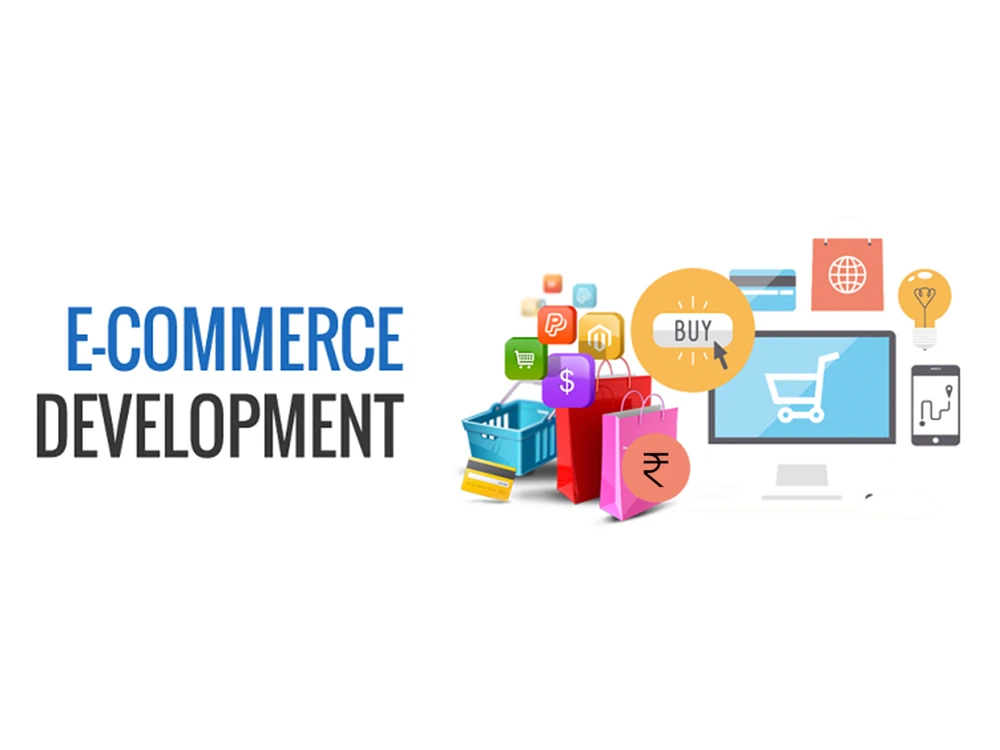E-Commerce development

B2B (business-to-business) e-commerce development involves creating online platforms or systems that facilitate transactions and interactions between businesses. B2B e-commerce has become increasingly important as companies seek efficient ways to buy and sell products and services, manage their supply chains, and streamline their procurement processes. Here's a guide to B2B e-commerce development:
-
Market Research and Planning:
- Start by understanding your target market, including their needs, pain points, and preferences.
- Identify your competitors and analyze their B2B e-commerce platforms to learn from their strengths and weaknesses.
- Develop a detailed business plan, including goals, target audience, and revenue projections.
-
Platform Selection:
- Choose the right e-commerce platform or build a custom solution based on your specific needs.
- Popular e-commerce platforms for B2B include Magento, Shopify Plus, WooCommerce (with extensions), and more.
-
User Experience (UX) Design:
- Design a user-friendly interface that caters to the needs of B2B buyers, including easy navigation, clear product listings, and account management features.
- Consider mobile responsiveness, as many B2B buyers use mobile devices for procurement.
-
Product Catalog and Content Management:
- Create a well-structured product catalog with detailed product descriptions, images, and specifications.
- Implement a robust content management system (CMS) to easily update and manage product listings and other content.
-
Integration with ERP and CRM Systems:
- Integrate your e-commerce platform with your Enterprise Resource Planning (ERP) and Customer Relationship Management (CRM) systems for streamlined operations and customer management.
-
Secure Payment and Pricing:
- Implement secure payment gateways and offer multiple payment options, such as credit terms, purchase orders, and invoices.
- Set up pricing structures that accommodate bulk orders, volume discounts, and negotiated pricing.
-
Customer Account Management:
- Provide features for business customers to create accounts, manage their profiles, and track order history.
- Implement a role-based access control system to manage permissions for different user roles within an organization.
-
Inventory and Order Management:
- Integrate inventory management tools to provide real-time stock availability information.
- Develop an efficient order processing system with features like order tracking, shipping options, and automated order confirmations.
-
Security and Compliance:
- Ensure the highest level of security to protect sensitive customer data.
- Comply with relevant data protection and privacy regulations, such as GDPR or HIPAA, if applicable.
-
Scalability and Performance:
- Build a platform that can scale with your business's growth.
- Optimize website performance for fast loading times and seamless user experience.
-
Testing and Quality Assurance:
- Thoroughly test the platform to identify and fix bugs and issues.
- Conduct usability testing to ensure a smooth user experience.
-
Launch and Marketing:
- Plan a successful launch strategy that may include email marketing, social media, and other promotional activities.
- Continuously market and improve your platform to attract and retain customers.
-
Analytics and Reporting:
- Implement analytics tools to track user behavior, sales, and other key performance indicators.
- Use data-driven insights to make informed decisions and optimize your platform.
-
Customer Support:
- Offer responsive customer support channels, such as live chat, email, and phone support.
- Provide comprehensive documentation and FAQs for self-service assistance.
-
Continuous Improvement:
- Regularly update and enhance your B2B e-commerce platform based on customer feedback and changing market trends.